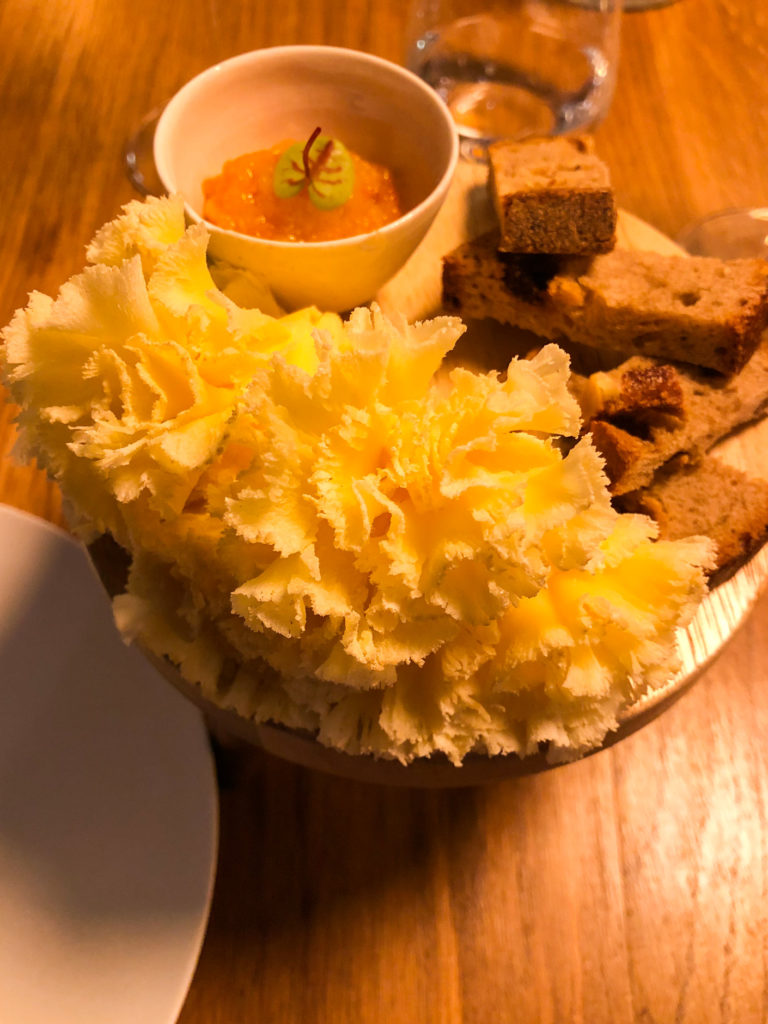I often rant about my love-hate relationship with Paris and its frustrating dining scene. The UK has arguably developed a moderately-priced middle ground, thanks to the advent of gastropubs and restaurateurs like Corbin and King who have made dining out so much more accessible than it used to be (indeed, recent studies suggest that Britons dine out at least twice a week). Across the Channel, the concepts of ‘bistronomie’ and casual food guide ‘Le Fooding’ (pioneered by French food critic Alexandre Cammas) have helped French chefs to showcase good food without stiff formality, but there are still relatively few restaurants between the exorbitant high-end or the bog-standard brasseries that are actually any good, especially in Paris. That may be a sweeping statement but nonetheless has had more than a puy lentil of truth in it for quite some time.
At long last, there is a glimmer of hope. Baieta is part of an emerging new breed of French resto that is casual, interesting and, most importantly, affordable. Located on the Left Bank in the Latin Quarter and a short walk from Notre Dame cathedral, it’s a brightly-lit, straw-coloured affair. On arrival for dinner around 8 ish it was only at half capacity. There was just the quiet hubbub of thirtysomething professional Parisians escaping the umpteenth consecutive week of gilets jaunes demonstrations in the capital.
This is Julia Sedefdjian’s domain and seems a relatively safe haven from the riots – indeed bringing a ray of sunshine from the south of France to slate-grey Paris. Hailing from Nice, Sedefdjian became France’s youngest female Michelin-starred chef at the tender age of 21 when she was at the fabled Les Fables de La Fontaine. Her influences from the Côte d’Azur are a leitmotif throughout. Starting with a tasty pissadiliere served on a mini three-legged stool, the Niçoise, and indeed Michelin, intentions are clear. To accompany the sweet caramelised onion amuse bouche, I ordered a delicious French 75, which was served with the lemon and gin components already pre-mixed in the Champagne flute ready for the waitress to top it up with Champagne from above for a little theatricality. Things got off to a good start.
the sea bass tartare was triumphant and flavoursome, with the freshness that evokes the French Riviera
That was until a certain customer turned up. I’m not sure where he was from but it was clear he could speak neither French nor English and relied on an ‘Alexa’ style translator on his phone: he talked into it in his language and the phone blurted out a robotic translation in French for the staff. Essentially it was a kind of obnoxious Babel Fish which bypassed private use and disturbed every single diner in the process. People who use the loudspeaker on their phone in a restaurant, or indeed at all, deserve more severe punishment than frowns and disapproving looks. Ricky Gervais in After Life would have had something to say to this customer I’m sure. It was simply intolerable.
Now of course you can’t really judge a restaurant on the clientele’s behaviour, and who you end up sitting next to is more or less a lottery, but the key thing is how the restaurant’s staff deal with such an intrusive situation. The staff at Baieta handled this eccentric customer well, even though their joking behind his back in French was duly noted in my notebook. Once this bloke had understood he needed to turn the volume down, we could relax. And on with the meal.
Next up, an encrusted egg which oozed yolk over pieces of haddock and leek once pierced. Yes, the haddock and egg combo is as old as the pyramids, but getting the deep-frying of the egg so that it is croustillant on the outside but releases an inundation of molten yolk once punctured can be tricky to get right. And the dish was, well, divine.
Meanwhile, my French companion’s sea bass tartare was triumphant and flavoursome, with the freshness that evokes the French Riviera.
Onto the plats, the main of chicken with stuffed cabbage was pleasant enough, served with a perplexing green sauce and a jus “corsé” with Pedro Ximenez sherry. Alas, the sherry jus seemed to over-promise and under-deliver. This did at least add some moisture to the dish which was needed. It’s clear that Sedefdjian can balance dishes well, even if there is the occasional minor glitch.
The signature dish is the “Bouillabaieta” – a twist on the classic bouillabaisse. In this beautiful rendition, the fish was served separately from the jus, and the jus itself had been made with an intense, flavoursome fish stock. This is a must-try.
The future for Julia Sedefdjian is as bright as the restaurant’s lighting
As is tradition in France, the cheese course is the bridge between mains and dessert. Their cheese of the day, provided by artisan cheesemaker Florence Arlettaz, remained a mystery with cheese shavings artfully arranged to look like coral. It was a sight to behold and a delight to eat.
And to finish, a citrusy little number comprising a fennel-infused biscuit base with marscapone and a pastis-infused sorbet which made for a light ending and palate cleanser rolled into one.
Overall, despite the lighting and translator app guy sitting next to me (each obnoxious in their own ways), it was one of my better dining experiences in Paris in recent years and wasn’t absurdly expensive either. This à la carte dinner came to about 100 Euros per head (all in), but a set 3 course lunch is just 29 Euros. Pas mal. The future for Julia Sedefdjian is as bright as the restaurant’s lighting, and I am, once again, cautiously optimistic about the democratic middle-ground in Paris’ dining scene.
5 Rue de Pontoise
75005 Paris
France
by J A Smith









